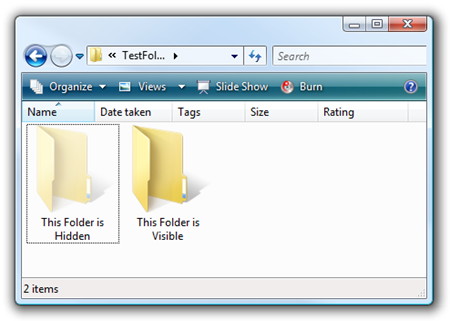Past that, you can be running nearly any kind of steady version of OSX (also Yosemite), and also we’ll keep you secured. You require 128 MB of RAM as well as 750MB of disk area. Avast for mac 10.7.5.
- Mac Keyboard Shortcut For Em Dash
- Mac Keyboard Shortcut For Screenshot
- Mac Keyboard Shortcut For Hidden Files
So, there is a way to add the Ctrl-H behavior to Mac OS, kinda-sorta, and this is the best I could get so far. Step 1: create a simple shell script The command to show/hide hidden files is defaults write com.apple.Finder AppleShowAllFiles YES, changing the last word to NO if you want to hide hidden files again. To make the shortcut behave as a toggle, we just create a “sentinel” hidden file (we created a hidden file for your hidden files so you can hide your hidden files etc.) to save the current state.

Feb 16, 2013 The command to show/hide hidden files is defaults write com.apple.Finder AppleShowAllFiles YES, changing the last word to NO if you want to hide hidden files again. To make the shortcut behave as a toggle, we just create a “sentinel” hidden file (we created a hidden file for your hidden files so you can hide your hidden files etc.) to save. Press ⇧ Shift+ ⌘ Command+.This key combination will display any hidden folders in your Mac's hard drive. Any hidden folders or files will appear as grayed-out. This keyboard shortcut can be done from any Finder window.
Plus, it’s super easy and it’s the same thing you would do in Linux. To make it executable, just open a terminal and type chmod a+x your_script_name.command Of course you need to cd into the same folder as your script, or use the absolute path of your script from whatever folder. Step 3: choose your preferred keyboard shortcut tool Ok so this is where you can choose how to launch the script. I strongly prefer the OSX-ified Ubuntu-esque way of just pressing Cmd-H (Cmd being OSX’s Ctrl in most cases) since I never use the shortcut to hide windows, and it’s what comes most natural to me.
Do a web search Type something into Spotlight and hit Cmd–B to open it as a search in your web browser. Clear Spotlight Search Esc clears to do another search. Esc a second time closes Spotlight. Safari Action Keystroke Highlight URL/Search Field (at top of window) Cmd–L Switch to Next Tab Ctrl-Tab (or Cmd-Shift-Right Arrow) Switch to Previous Tab Ctrl-Shift-Tab (or Cmd-Shift-Left Arrow) Switch tabs: jump directly to the first tab, second tab, etc.
Mac Keyboard Shortcut For Em Dash
Sponsored Links Post this, a Finder window on desktop may be vanished and then reappear. When the Finder reappears, you can see hidden folders.
But what if you’re in a directory & want to see the hidden files? You’re out of luck. Unless, that is, you know the super-cool & also super-hidden key command to toggle the display of hidden files in an Open dialog window: Command-Shift. (that’s a period at the end, which makes sense, since that period at the beginning of file names is what makes them invisible!). Press it once, & hidden files reveal themselves; press it again, & they disappear like a Romulan Bird of Prey. Oh, I am so going to use this command all the time!
Senior editor Dan Frakes personally uses the chflags command in Terminal (via LaunchBar) or uses FastScripts to run the toggle-visibility AppleScript. Updated 7/25/2011, 10:30am, to add tip about creating a keyboard shortcut; and at 3:50pm to correct an error about the Go menu in Snow Leopard, and to add a note about third-party utilities adding a setting specifically for showing the Library folder.
Mac Keyboard Shortcut For Screenshot
• Option key while double-clicking: Open the item in a separate window, then close the original window. • Command key while double-clicking: Open a folder in a separate tab or window. Free graphic design software mac. • Command key while dragging to another volume: Move the dragged item to the other volume, instead of copying it.
Mac Keyboard Shortcut For Hidden Files
Run the following command to disable this option and restart the Finder: defaults write com.apple.finder AppleShowAllFiles FALSE killall Finder If you’d like to view and hide hidden files and folders with a key press, you could create that automatically runs these commands when you press a certain key or click a menu option. Unhide a File or Folder Want to unhide a file or folder? Run the same command you ran before, but change “hidden” to “nohidden.” In other words, type the following command into the terminal, typing a space after it: chflags nohidden If you remember the exact path of the folder or file, you can type it into the terminal. If you don’t, you can use the above trick to display hidden files and folder in the Finder and drag and drop that hidden file or folder into the Terminal, as you did earlier. (You can also press the up arrow key at the terminal to cycle through previous commands, locating the command that made the file or folder hidden. Use the left arrow key to go to the “hidden” part of the command and change it to “nohidden,” and then press Enter.) Type Enter afterward and the file or folder will become unhidden, so you can access it normally. You can also hide files or folders by renaming them to begin with a “.”, or period, character.